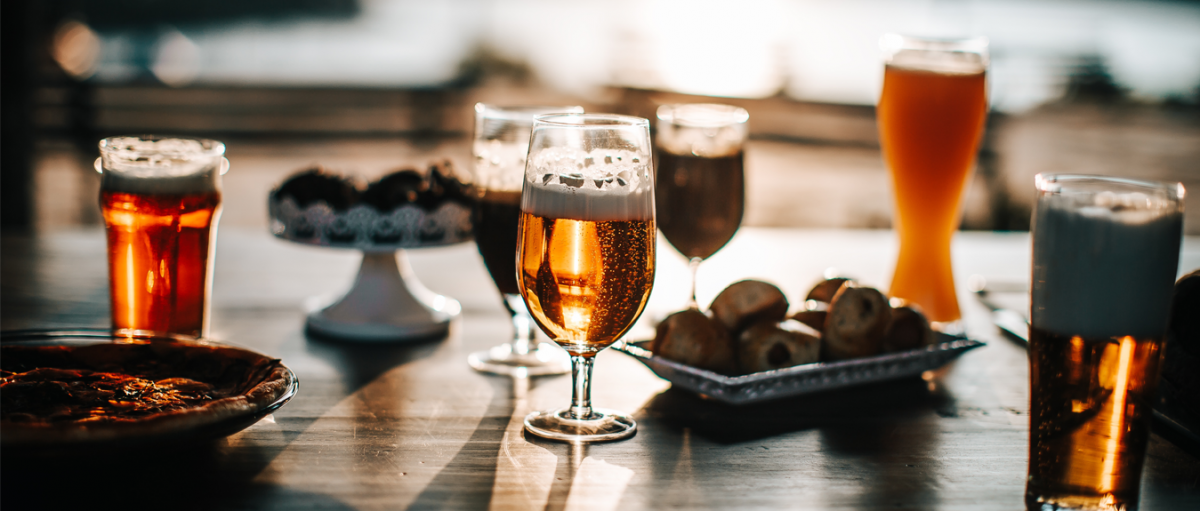Warehouse
Deadline
July 10, 2026
Judging
Date
July 26, 2026
Winners
Announced
August 12, 2026

Beer glassware is the kind of utensils specifically designed for the sole purpose of drinking beer. The design constraints of this glassware depend on the type of beer, serving measures, national traditions and even on stacking techniques that avoid breakage. Beer glasses can also vary based on the reason of its production like commercial promotion, novelty item, usage in drinking games etc. The right glass affects the aromatic and visual appearance of the beer. Beer glass can not only be made with glasses but also wood, stone, earthenware and pewter.
[[relatedPurchasesItems-43]]
|
|
FluteFlute glasses are Belgian and Dutch style of glasses, originally designed for serving of champagne. It can be used to serve Belgian Lambic, Fruit Beers, Strong IPAs and German Weiss beers. The flute has a narrow shape which helps to maintain carbonation while maintaining its aroma. This glass helps view live carbonation, sparkling colour, and soft lacing of different styles. |
|
|
MugMug or Willi Becher or Willy mugs is the German standard glass. It is characterized by its shape. It is conical to the top portion, where it curves inward, to converge back to the top of a smaller diameter opening. The Willi cup is produced in various sizes like 200 ml, 250 ml, 300 ml, 400 ml, and 500 ml. |
|
|
Pilsner GlassA pilsner glass is used for many types of light beers, like pale lager or pilsner. Pilsner glasses are generally smaller than a pint glass, usually in 200 millilitres, 250 ml, 300 ml, 330 ml or 400 ml sizes. In Europe, 500 ml glasses are common. They are taller, slender and tapered. The pilsner glass reveals the colour, and carbonation of the beer and the broad top helps maintain a beer head. |
|
|
StangeThe high, narrow and cylindrical Stange is traditionally used for Kölsch. The Stange usually holds between 100 ml and 200 ml, though larger ones are now sometimes used to reduce serving work. Stangen is carried by slotting them into holes in a special tray called a Kranz. |
|
|
Pint GlassA pint glass is a wide, stemless, slightly-reverse-tapered glass which is the standard of English and Irish pubs. It holds one pint of beer and is designed for beers with heads that are long-lasting and thick in texture, such as those of Guinness Stout. Pint glasses are well-suited for just about any English or Irish ale. |
|
|
GobletGoblets are large, stemmed, bowl-shaped glasses adequate for serving heavy Beer in Belgium, German bocks, and other big sipping beers. The distinction between goblet and chalice glasses is typically in the glass thickness. Goblets tend to be thick, while the chalice is thinly walled. |
|
|
WeizenA Weizen glass is majorly used to serve wheat beer. Weizen glasses were originated in Germany. Weizen glass is narrow at the bottom and slightly wider at the top, which helps in releasing aroma and providing room for the often thick, fluffy heads produced by wheat beer. Weizen glasses tend to be taller than a pint glass and generally holds 500 ml with room for foam. |
|
|
TulipA tulip glass helps trap the aroma and also aids in maintaining large heads, creating a visual and olfactory sensation. The body of tulip glass is bulbous, but the top flares out to form a lip which helps head retention. It is recommended for serving Scottish ales, American double/imperial IPA, barley wines, Belgian ales, and other aromatic beers. |
|
|
SnifterSnifter is typically used for serving brandy and cognac, a snifter is ideal for capturing the volatiles of aromatic beers such as Double/Imperial IPA, Belgian ales, barley wines, and wheat wines. The shape of snifter helps trap the volatiles while allowing swirling to agitate them and produce an intense aroma. |
|
|
Beer SteinA beer stein or simply 'stein' is an English neologism for either traditional beer mugs made out of stoneware or specifically ornamental beer mugs that are usually sold as souvenirs or collectables. Steins are usually made out of stoneware, pewter, porcelain, or even silver, wood or crystal glass. They may have open tops or hinged pewter lids with a thumb-lever. Steins usually come in sizes of a half-litre or a full litre like decorative tankards, they are often decorated in a nostalgic manner, but with allusions to Germany or Bavaria. |
Get rated by Quality, Value, and Packaging by the top retail buyers in the USA. Here is how to enter.